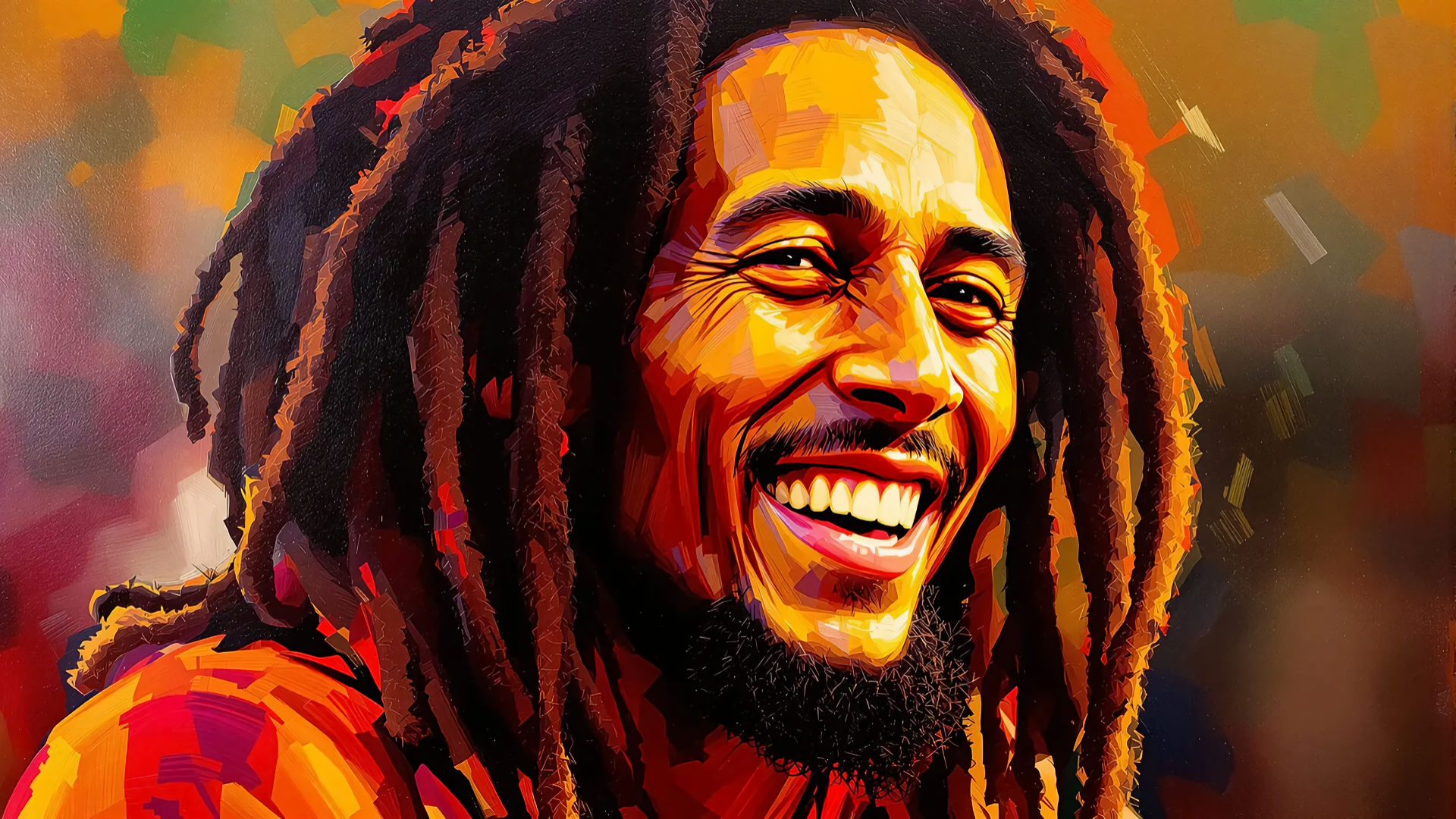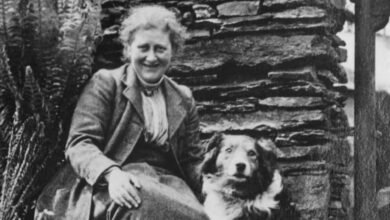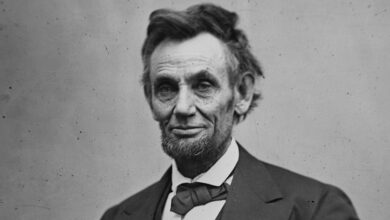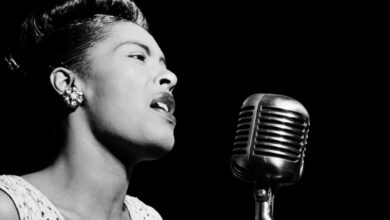Bob Marley
Few musicians have transcended genre and geography as completely as Bob Marley. Born into hardship and raised amid the struggles of postcolonial Jamaica, he became one of the twentieth century’s most enduring cultural icons. His music carried messages of unity, defiance, and hope that resonated far beyond his island home. To understand Bob Marley is to understand how rhythm became revolution, and how one man’s faith in music and humanity helped reshape the sound and spirit of the modern world.
Early Life in Jamaica
Robert Nesta Marley was born on 6 February 1945 in Nine Mile, a small village in Jamaica’s rural parish of Saint Ann. His mother, Cedella Malcolm, was an 18-year-old Jamaican woman of African descent. His father, Norval Marley, was a much older Englishman who had served in the British Navy and was largely absent from his son’s life. The mixed heritage that defined Bob’s childhood also exposed him to questions of identity, belonging, and inequality that would echo through his later work.
Life in rural Jamaica was marked by poverty but also by a strong sense of community. Bob grew up surrounded by music, gospel hymns, local mento tunes, and the rhythms of daily life. As a child, he showed an unusual seriousness, even a touch of introspection, that set him apart. Friends later recalled him as quiet but intense, with eyes that seemed to look far beyond the small world of Nine Mile.
When Bob was still a boy, his mother moved to the capital, Kingston, in search of work and opportunity. The young Marley soon followed, finding himself in Trench Town, one of the city’s toughest neighbourhoods. It was there, among corrugated rooftops and crowded streets, that his musical education began in earnest.
Finding a Voice in Kingston
In Trench Town, Marley encountered a melting pot of musical influences: rhythm and blues from American radio stations, local ska and rocksteady beats, and the emerging sound that would later become reggae. Music was both a form of escape and expression. Alongside friends Bunny Livingston (later Bunny Wailer) and Peter McIntosh (later Peter Tosh), Bob began writing songs that reflected the daily struggles and spiritual yearnings of Jamaica’s poor.
In the early 1960s, the trio formed a vocal group called The Wailers. Their early singles, such as Simmer Down, were sharp and energetic, infused with ska rhythms and social commentary. These songs struck a chord with Jamaica’s urban youth, who recognised their own frustrations in the music’s pulse.
The group’s first real breakthrough came when producer Coxsone Dodd signed them to Studio One, Jamaica’s most influential record label at the time. Under Dodd’s guidance, The Wailers refined their sound, replacing brash ska with the slower, heavier rhythms that would soon evolve into reggae. Marley’s songwriting deepened, weaving together street reality, political insight, and spiritual conviction.
Faith and Transformation
Marley’s spiritual evolution was as important as his musical one. In the late 1960s, he embraced the Rastafari faith, a religious and cultural movement that emerged in Jamaica during the 1930s. Rooted in a blend of Christian theology and African identity, Rastafari recognised Haile Selassie I, Emperor of Ethiopia, as a divine figure and symbol of black liberation.
For Marley, Rastafari offered a moral compass and a sense of purpose. It provided a language for his growing social consciousness and shaped his image, the dreadlocks, the colours red, green, and gold, and the messages of peace and resistance. Through Rastafari, Marley saw his mission as both spiritual and political: to awaken people to the injustices of the world while affirming their inner strength.
His lyrics began to reflect this new vision. Songs like “Small Axe,” “Soul Rebel,” and “Get Up, Stand Up” called for empowerment and unity among the oppressed. Marley’s voice, at once tender and commanding, carried a sincerity that transcended ideology. To many listeners, he was not preaching but bearing witness.
The Rise of Reggae
By the early 1970s, Jamaica had gained independence but remained mired in inequality and political tension. Reggae music, with its deep basslines and reflective lyrics, became the soundtrack of the nation’s conscience. The Wailers stood at the forefront of that movement.
Their collaboration with Island Records in 1972 marked the beginning of international recognition. Under the guidance of producer Chris Blackwell, The Wailers released Catch a Fire, an album that introduced reggae to global audiences. Its polished production and universal themes helped Marley and his band cross cultural and racial boundaries.
Subsequent albums such as Burnin’ (1973) and Rastaman Vibration (1976) solidified Marley’s reputation as both artist and prophet. Tracks like I Shot the Sheriff and No Woman, No Cry carried his music into the mainstream, while never abandoning its moral core. For millions of listeners around the world, Marley’s voice became the sound of defiance wrapped in warmth.
The Messenger of Peace
As Marley’s fame grew, so too did his role as a unifying figure in Jamaica’s fractured society. The island was divided between rival political factions, and violence was commonplace. Marley’s 1976 Smile Jamaica concert was intended as a gesture of peace, but two days before the performance, gunmen attacked his home, injuring him, his wife Rita, and his manager. Despite his wounds, Marley performed as scheduled, explaining that those trying to make the world better could not afford to hide.
In 1978, he helped organise the One Love Peace Concert, where he famously brought together Jamaica’s political rivals, Michael Manley and Edward Seaga, on stage for a handshake. That act cemented his reputation not only as a musician but as a moral force. For the rest of his life, he used his platform to promote reconciliation, equality, and faith.
Global Icon
By the late 1970s, Marley had become an international figurehead, not just of reggae, but of resistance and cultural pride. His tours drew massive crowds from Europe to Africa, where his message resonated with anti-colonial and liberation movements. His 1979 album Survival was explicitly political, addressing African unity and self-determination.
Marley’s music carried universal appeal because it blended protest with peace. One Love, Three Little Birds, and Redemption Song offered comfort without complacency. His ability to express hardship through hope distinguished him from other political musicians of his era. He made rebellion feel redemptive.
Illness and Legacy
In 1977, Marley was diagnosed with melanoma after a wound on his toe failed to heal. He continued to perform despite his illness, refusing to let it define his life. His final tour in 1980 drew enormous crowds, including 100,000 people in Milan, a testament to how his message had spread across borders.
By the time he collapsed during the tour in New York, the cancer had spread. He returned to Jamaica after seeking treatment in Germany, but was too weak to recover. Bob Marley died in Miami on 11 May 1981, at just 36 years old. His final words to his son Ziggy were simple: “Money can’t buy life.”
Jamaica honoured him with a state funeral that drew thousands of mourners and world attention. His body was buried near his birthplace in Nine Mile, surrounded by the hills and people that had shaped him.
The Power of Legacy
Bob Marley’s impact extends far beyond his short life. His songs remain among the most played and recognised in the world. His face, serene, intense, and crowned with dreadlocks, has become a global symbol of rebellion and peace. Yet to reduce him to a cultural icon is to miss the human core of his message.
He stood for self-respect, love, and unity in a time when both his homeland and the wider world were divided by race, class, and ideology. His faith in music as a moral and healing force turned art into activism without losing tenderness. In every chord, there is conviction; in every silence, compassion.
Marley’s influence can be heard in genres from hip-hop to rock, and his message of spiritual equality continues to inspire artists, activists, and ordinary people. In 1994, he was inducted into the Rock and Roll Hall of Fame, and in 2001, he received a posthumous Grammy Lifetime Achievement Award. Yet perhaps his greatest achievement remains his ability to make millions believe that hope itself could have rhythm.
Final Word
Bob Marley was more than a musician. He was a moral compass in a chaotic century, a voice for the voiceless, and a bridge between faith and freedom. His songs, rooted in the pain and pride of Jamaica, became a universal language of redemption.
He taught the world that peace is not the absence of struggle but the courage to face it with love. His laughter, his faith, and his unbroken spirit live on in every note of Redemption Song and every echo of One Love.
Bob Marley did not merely sing of freedom, he lived it, and in doing so, gave it melody.
Bob Marley FAQ
Bob Marley was a Jamaican singer, songwriter, and activist whose music popularised reggae and carried messages of peace, unity, and resistance.
He transformed reggae into an international art form and used his platform to promote equality, spiritual freedom, and global solidarity.
His music was shaped by Rastafari beliefs, Jamaican social struggles, and the sounds of ska and rocksteady that evolved into reggae.
His best-known works include One Love, No Woman, No Cry, Redemption Song, and Get Up, Stand Up, all of which carry enduring messages of hope.
His life teaches that art can be both joyful and political, and that music can transcend divisions to become a force for peace and identity.






